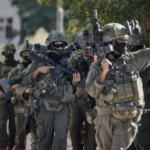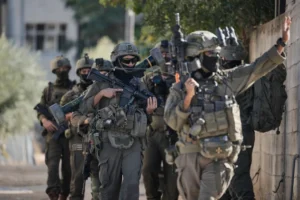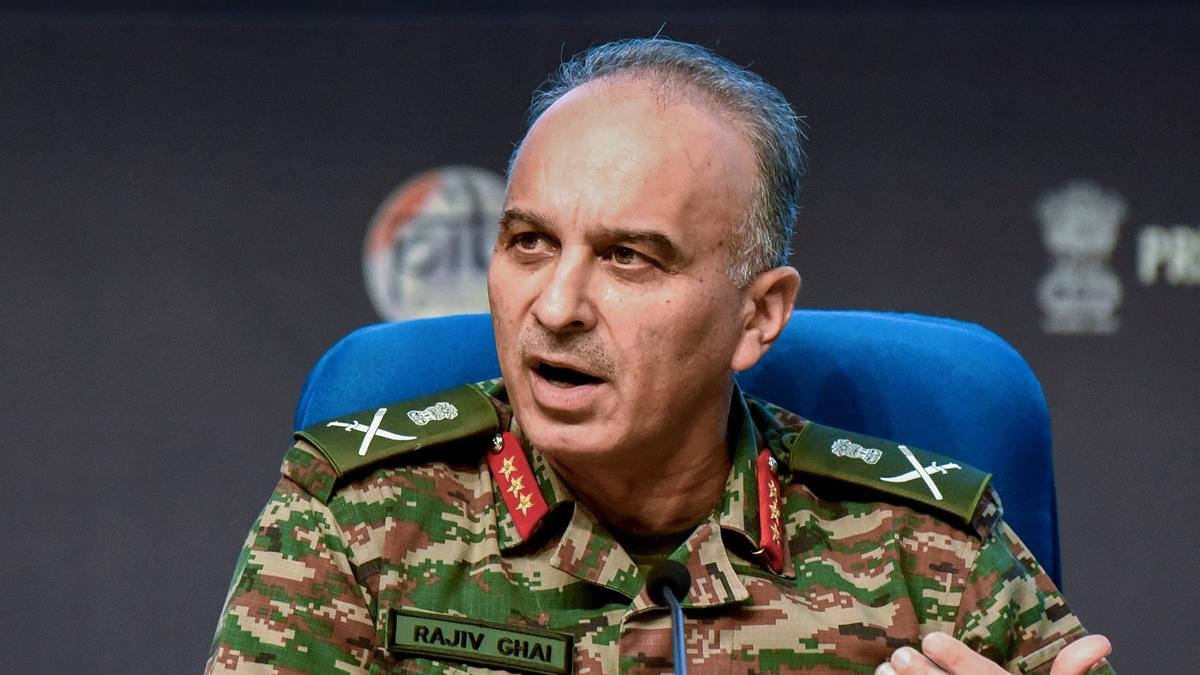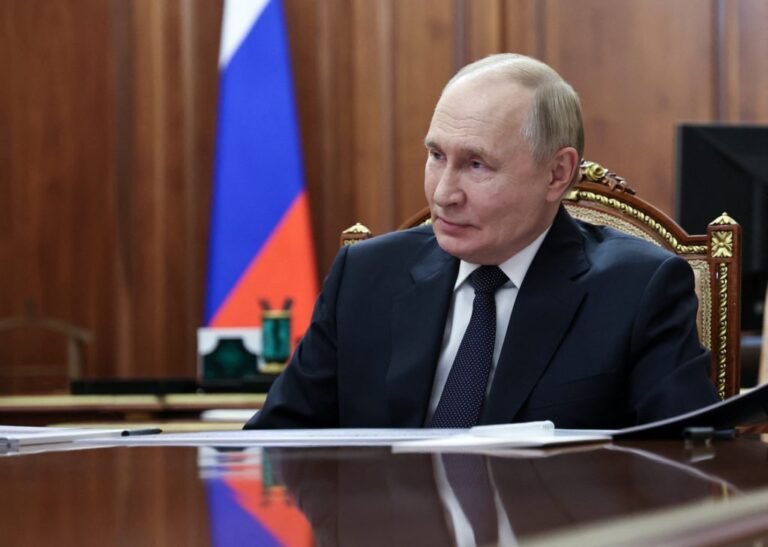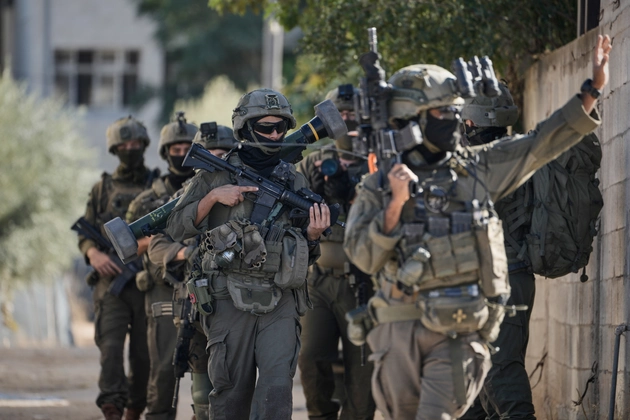Director General of Military Operations Lt. Gen. Rajiv Ghai (right) speaks at the DGMO media briefing as Air Marshal AK Bharti looks on in New Delhi. (AP Photo)
The number of posthumous awards given by Pakistan suggests that the figure of their military personnel casualty on the Line of Control (LoC) was in excess of 100, Deputy Chief of Army Staff (strategy) Lt General Rajiv Ghai said Tuesday, referring to Operation Sindoor in May.
After the April 22 Pahalgam terror attack, in which 26 people were killed, Lt Gen Ghai, who was the Director General of Military Operations (DGMO) during Operation Sindoor, said everybody knew a response was inevitable. “Between April 22 and the night of May 6-7, actions were evolving and unfolding… We were prioritising our targets. We carried out certain precautionary deployments on our borders to make sure the enemy was deterred. There was a lot of coordination among inter-service government departments and agencies,” he said while addressing the Army Chiefs of UN Troops Contributing Nations.
“The final selection of targets was carried out from a large number of targets that we scrutinised. During all this, there was a very harmonised and proactive information warfare campaign that was also unfolding,” Lt Gen Ghai said.
The IAF swung into action after Pakistani drones continued violating Indian airspace in large numbers, despite a communication between the DGMOs, said Lt Gen Ghai.
Ghai elaborated on the precision strikes carried out by the IAF on the night of the 9 and 10 May. “We hit 11 of their (Pakistan) air bases. Eight air bases, three hangars and four radars were damaged. Pakistani air assets were destroyed on the ground,” he said, adding that one C-130 class of aircraft and one Airborne Early Warning and Control (AEW&C), four to five fighter jets, and some assets were destroyed in the air.
Earlier this month, IAF Chief Air Chief Marshal A P Singh said Indian strikes at three separate locations within Pakistan resulted in damage to a C-130 aircraft and four to five fighter jets, likely F-16s, which were parked in the hangars. Additionally, an AEW&C aircraft or a Signals Intelligence (SIGINT) aircraft, as well as five advanced fighters of the F-16 and JF-17 class, were taken out in a long-range strike launched by the IAF.
“We now know that the world’s longest-ever ground-to-air kill was at 300 km-plus and (damaged) five high-tech fighters. I think the impunity with which these attacks were carried out is what is significant,” Lt Gen Ghai said.
Story continues below this ad
The Navy was also in action, he said, sailing into the Arabian Sea and were well poised there. “Had the enemy decided to take it any further, it could have been catastrophic for them and not only from the sea but from other dimensions…” he said.
“We had war-gamed four to five steps ahead, and we knew the Pakistanis were going to do this. So we went and hit them on the second layer, which is not something they expected on the LoC. That’s why they had the number of casualties that they did.”
He also said that in the strikes in the early hours of May 7, more than 100 terrorists were killed.
Lt Gen Ghai said it took 88 hours for the enemy to ask for a cessation of hostilities. He stressed that the military actions were targeted, controlled, non-escalatory, and “we openly acknowledged them to maintain our credibility”.
Story continues below this ad
“We carried out some significant and telling forward deployments, extending our punitive reach to unprecedented levels,” he said.
Referring to the killing of three terrorists in June who were behind the Pahalgam terror attack, Lt Gen Ghai said, “… it took us 96 days but we did not let them rest. When those three were found and terminated clinically, it seemed as if they were exhausted from running, and also seemed malnourished.”
“People often ask where they have vanished. But it is sometimes like searching for a needle in a haystack… The Home Minister has spoken about this in the Parliament. They were eliminated, and justice was served,” he said.


